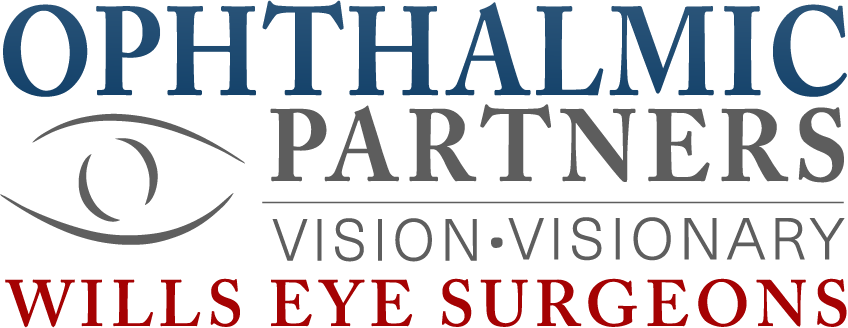Corneal Neovascularization
Treatment of corneal neovascularization is a service provided for patients in Philadelphia, Pennsylvania and the surrounding communities by Ophthalmic Partners.
WHAT IS CORNEAL NEOVASCULARIZATION?
Corneal neovascularization is a corneal condition where oxygen deprivation and stress cause abnormal blood vessels to grow in the normally clear, translucent cornea.
WHAT CAUSES CORNEAL NEOVASCULARIZATION?
The main underlying cause is lack of oxygen to the cornea. Long-term use of contact lenses is a main contributor, but toxic contamination from lenses or solution, trauma or infection, chemical burns, or lens deposit buildup can also be a cause. When contact lenses or some other condition interferes with the transport of oxygen to the cornea, the eye responds by growing extra blood vessels to help supply oxygen and nutrients to the oxygen-depleted tissues. The longer a lens is worn (more than 10 hours a day), the greater the risk of corneal hypoxia (lack of oxygen) and the chance of developing corneal neovascularization. When blood vessels extend beyond 2mm from the margin of the cornea, the condition needs to be treated, or permanent intolerance to contact lens or vision loss can occur.
Corneal neovascularization may also be caused by infections, trauma to the eye, chemical burns, immune system diseases and certain other eye conditions, such as uveitis, glaucoma and phthisis bulbi.
WHAT ARE THE RISK FACTORS FOR CORNEAL NEOVASCULARIZATION?
Due to the broad range of causes for corneal vascularization, anyone may develop this condition.
HOW CAN CORNEAL NEOVASCULARIZATION BE PREVENTED?
The best way to prevent corneal neovascularization is to protect your eyes, especially when you are outdoors, or when you are using any type of chemicals or other substances that may damage your eyes. If you wear contact lenses, you should follow your eye doctor’s recommendations with regard to the length of time you can wear your lenses and the proper cleaning schedule for your lenses.
HOW IS CORNEAL NEOVASCULARIZATION DIAGNOSED?
Actively engorged blood vessels can be seen in the white of the eye. Other symptoms include the following:
- Pain
- Redness around the cornea
- Tearing
- Light sensitivity
- Decreased vision or blurring when wearing contact lenses
- Intolerance to contact lens after wearing them for a short time
HOW IS CORNEAL NEOVASCULARIZATION TREATED?
Treatment of corneal neovascularization depends on the severity of the condition and the cause. Corticosteroids may be prescribed to reduce vascularization. Surgical options include laser photocoagulation. Reduction or temporary cessation of contact lens wear time may be necessary to allow the tissues to heal. A contact lens refit with an oxygen permeable or high oxygen transmissible lens is an option that works for many people. Once the condition has healed, contact lens wearers should pay close attention to adequate corneal lubrication.
Additional
Eye Disorders
Schedule an Appointment
Get Started
Early detection of eye disease is the best defense against vision loss, particularly for individuals over the age of 40. Should you experience any vision problems that could be an indicator of an eye disorder, contact one of our offices in Philadelphia, PA, Bala Cynwyd, PA, Media, PA, or Marlton, NJ, as soon as possible to book an assessment.
The eye doctors and surgeons at Ophthalmic Partners have the necessary expertise and experience to diagnose, manage, and treat complex eye disorders and diseases. Visit us today to keep your eyes healthy and your vision clear.

Pennsylvania:
(484) 434-2700
New Jersey:
(856) 596-1601